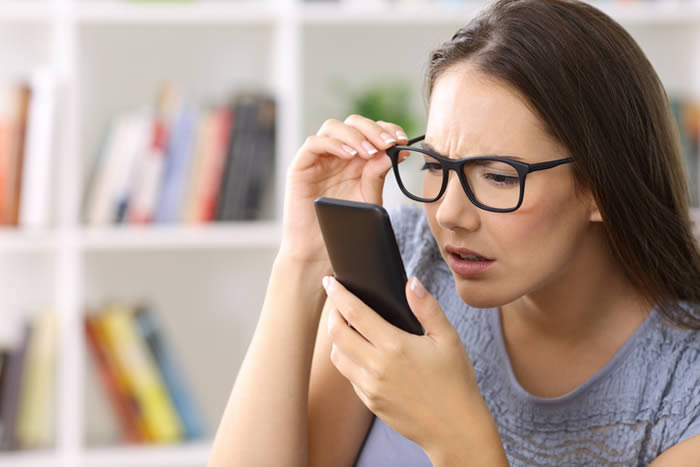Vision assumes a critical role in our wellbeing and accomplishing a good quality of life. It also affects the way a man identifies himself and coordinates with the society and has an impact on several other areas such as education and employment.
Vision truly matters as it is essential to our regular daily functioning. In fact, vision influences our psychological advancement, emotional well-being, professional and personal development and functional capacity in aged people
As per the researchers, 253 million individuals are estimated to be visually impaired around the world- 36 million of whom suffer from total blindness and 217 million with extreme or moderate blindness (2015 data). Approximately yet another 1.1 billion individuals are assessed to have near vision impairment. However, the silver lining lies in the fact that almost all of these diseases can be cured or treated.
Though we have undertaken substantial efforts in the past in blindness prevention programmes to improve the outcomes and generate economic benefits for those suffering from such impairments by enabling them to work, the future of eye care promises to be much more exciting, remarkable and unlike our previous efforts. The impact of new technologies can already be seen. The age-standardized predominance of serious, moderate and mild vision problems is no longer expanding at the pace it did before, revealing a shift in the trend.
 Consequently, with the advent of new innovations, we are moving into another age in eye healthcare where developments in technology are empowering opticians to invest less energy taking estimations and more time examining and analyzing the discoveries and giving patients a customized treatment. For instance, eye-care instruments are so automated and user-friendly that it saves a lot of time to treat a patient. For instance, where a traditional cataract surgery could take days and sometimes weeks in the past, it can now take place in a matter of 15-30 minutes. We could see similar developments continue in future as well. Let us consider some major developments that have taken place in eye-care and predict the trend it sets for the future.
Consequently, with the advent of new innovations, we are moving into another age in eye healthcare where developments in technology are empowering opticians to invest less energy taking estimations and more time examining and analyzing the discoveries and giving patients a customized treatment. For instance, eye-care instruments are so automated and user-friendly that it saves a lot of time to treat a patient. For instance, where a traditional cataract surgery could take days and sometimes weeks in the past, it can now take place in a matter of 15-30 minutes. We could see similar developments continue in future as well. Let us consider some major developments that have taken place in eye-care and predict the trend it sets for the future.
Mobile Health tools:
Smartphones and computer devices have become an indispensable part of our daily lives. This new field of technological revolution, also called as ‘Eye Tech’ could play an instrumental role in shaping the future of eye care. Currently, we could see the disruption of eye healthcare market with new applications that make the examination of the eye more efficient and less complicated. Scientists have also successfully tested the use of augmented reality and virtual reality applications and its prospect in treating several ocular diseases.
Mobile health tools could also assist in the timely medical treatment of diseases by warning about symptoms as soon as they occur. This is especially important for diseases like diabetic retinopathy which require treatment at early stages of incubation. Ophthalmologists are also looking forward to applications of mobile health tools in monitoring eye health and preventing damage to retinal cells.
 Eye care wearables:
Eye care wearables:
Besides cell phones and health applications, wearables are turning into an imperative device in managing ocular well-being. The present wave of wearables is smarter and more efficient in performing specific tasks and maintaining wellbeing. Wearable technology came to foray in 2012 with the announcement of ‘Google Glass’. Today, Smart Contact Lens being developed by Google, Sony or Samsung can help individuals in correcting eye injuries and genetic diseases. Some eye care wearables
Reversal of blindness:
Currently, age-related macular degeneration and retinal degeneration is a cause of blindness for approximately 1.5 million people throughout the world. However, retinal implant in the form of ‘bionic eye’ was made possible in 2016 and is developing at a remarkable pace. The artificial implant transmits electric signals to nerve cells supported by a tiny computer powered by a magnetic coil sitting at the back of the ear (similar to a hearing aid). Over the course of time, the brain adjusts to the device and starts converting flashes of light into meaningful images. This technology could develop in future to lead to the end of blindness once and for all.
Artificial retina:
An artificial retinal implant was first reported in March 2017 by Italian scientists, as a cure to retinitis pigmentosa, a debilitating condition leading to breaking down of photoreceptor cells in the eye and retinal degeneration. In this, a prosthesis is implanted into the eye that acts as a substitute to the damaged retina.
Gene Therapy:
Scientists are also looking forward to editing the genes to correct severe hereditary anomalies including diabetic retinopathy and retinal issues that are mostly caused as a result of genetic factors. Genome therapy has shown remarkable promise in preventing blindness among lab subjects. Patients could see the first FDA-approved gene therapy to correct inherited abnormal traits by the end of this year itself.
Digital Contact lenses:
The use of digital contact lenses as next-gen devices has been a subject of many movies including the Mission Impossible series and could soon be a reality. This means that glasses and contact lenses would be a thing of the past, where efficient digital lenses connected to the computer could monitor the eyes and notify any issue that may arise. It’s an exciting prospect and is currently being pursued by Google and other companies across the world.
In an age of exponential revolution, the health sector is witnessing new changes on an almost daily basis. With the current pace of development, the future of eye care could be much less complicated and quicker than present techniques and procedures. In any case, it is worth looking out for better healthcare services in this industry.



